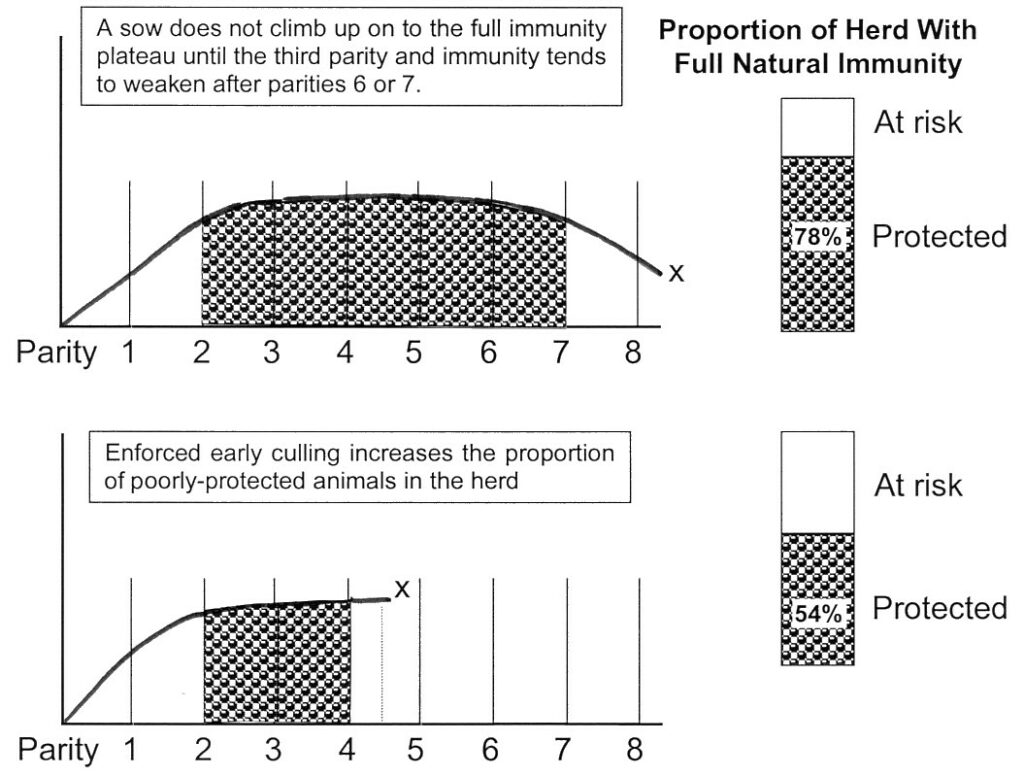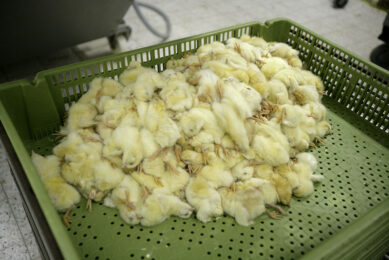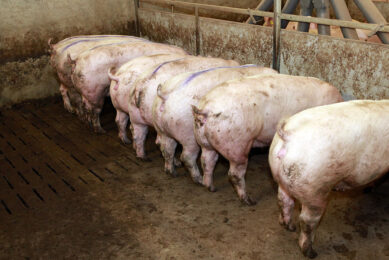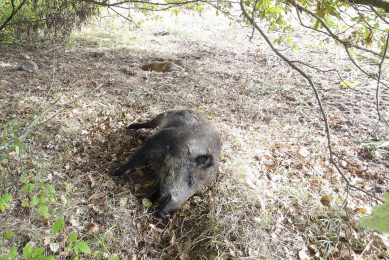What the textbooks don’t tell you . . . about Culling

Considering it is a task we all have to do sooner or later, culling is covered rather badly in textbooks, so here are a few thoughts on the subject this month, followed by a ‘How to Cull Properly’ spread-sheet next month.
Culling is over-hyped, overdone
World-wide our herd life is too short, and sow replacement rates quoted (like 45%) in some textbooks make me cringe! I know it is ‘realistic’ these days, but it shouldn’t be, and in future when every scrap of costs saved is vital to our survival, not keeping ‘sows-that-can’ on longer than the mandatory sixth litter cut-off point is plain squandering of hard-earned capital. If it’s not broken, don’t fix it!
Why do so many textbooks accede to the fashion that, if the sow survives 6 litters then send her on for sausages anyway!
Topping-up charge
I’ve done some econometric sums in an unpublished report on a product which significantly seemed to lower sow culling rates after the fourth parity. I don’t think I’m revealing any confidences if I show you in Table 1 my calculations of the proportion of litters produced thereafter. You’ll be hearing about it soon enough I guess, as the results seem quite dramatic.
This was from a high-producing ‘expert’ herd, too, so the sows were being pushed, I expect. The comparison is indeed dramatic and shows excellent stockmanship even in the control section of the herd.
Bearing in mind that it costs about £40 each time a gilt replaces a cull sow (what I call the topping-up charge), I calculate that the value of keeping the sows in productivity across and beyond 6 parities was £1.61 more income per weaner in this trial and gave a cost:benefit ratio (i.e. REO) of 6.4:1.
As I said in my opening remark, you have got to cull/got to pay that topping up charge sooner or later, but the longer you can effectively delay it by having more older and productive sows – the more income you secure per weaner.
Why the fashion for sixth parity culling?
Large herds tend to operate on a ‘proforma basis’ where replacement stock are ‘ordered up’ or prepared in gilt pools for automatic entry at a parity which the unit finds convenient to fit its pigflow plan.
It is thought that naturally-acquired immunity tends to fall-off at around the sixth and seventh parities (being re-established again later) and a viral disease peak can occur at this time, which can also threaten younger stock, e.g. PRRS. This is called ‘back-tracking’.
Plus, the harsh and exercise-restricting conditions for sows in large herds tends to cause culling from leg and physical, surface body debilitation by the sixth parity, even though these sows may have been otherwise healthy and productive enough.
Breeding companies encourage rapid sow turnover in order to maximise the benefits of genetic improvement in their latest replacement gilts for sale.
Figure 1 – The danger of a short herd life.

The resting lion
The percentage of viable sows remaining in production varies a bit, but most of us agree that at present, the herd age profile is something like Figure 1. Gilt numbers can be ideally anywhere between 15 – 20% (dependent on farrowing index and replacement rate). If down towards 15%, the lion does not have a head and his back is straighter! Either profile is productively efficient. However, from the trial cited earlier, maybe our lion of the future could have a rather lower but much longer profile? I hope it does, because it fits into the correct economic theory of SLC, or producing the ‘Same at Less Cost’. Next month; what to do, and not do, vis-à-vis culling.











